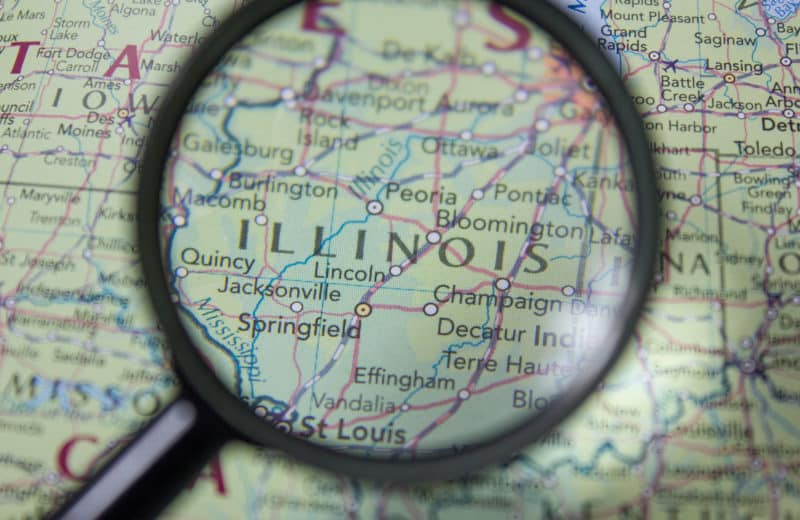By Kimberly Lankford, Kiplinger Personal Finance
In an era of higher deductibles, rising out-of-pocket costs, shrinking provider networks and fewer choices in health care, more people are taking matters into their own hands. Instead of using their health insurance for all of their care, they’re going off the grid and paying cash so they can see the doctors they choose or get the drugs they prefer. Some are paying a fee to their primary care physician in exchange for longer office visits and 24/7 access.
Going off the grid doesn’t mean ditching your health insurance altogether. You’ll still need insurance for big-ticket medical care. But it usually makes sense to get a high-deductible policy to save on premiums.
Payments you make in cash may count toward your deductible, and if you contribute to a health savings account or a flexible spending account, you can usually use that money tax-free to cover your out-of-pocket costs for medical expenses, even if your insurer doesn’t count them toward the deductible. The payoff: more control over your care, which may cost less than you’d pay with your health insurance policy.
CASH FOR CONCIERGE CARE
Frustrated by the lack of time they can spend with patients when controlled by insurers, many primary care doctors are shrinking their practices and charging a fee in return for personalized attention and round-the-clock access. Costs and levels of access vary widely.
The typical fee ranges from $1,800 to $5,000 per year, but some physicians keep their practices a bit larger and offer access for as little as $40 to $75 per month. The fees generally aren’t covered by insurance or Medicare, but charges for doctors’ visits may be covered.
Concierge care appeals to people who want to control who they see, as well as when and how.
“They want a doctor who’s acting as their advocate and adviser, to have a relationship that’s more akin to old-fashioned care,” says Wayne Lipton, managing partner and CEO of Concierge Choice Physicians, which includes about 200 doctors in 22 states.
Pamila Brar, an internal medicine physician in La Jolla, Calif., and president-elect of the American Academy of Private Physicians, a trade organization for concierge doctors, charges $3,300 per year and has just 200 patients. About half of them have been diagnosed with cancer or a complex condition. Brar helps them coordinate their care and assess their options.
“I have had a number of patients whom I’ve taken care of in the last months of their lives,” she says.
Adult children who live far from their aging parents have also started hiring her to provide the parents with special attention, advocacy and even house calls. Nathan Myhrvold and his brother, Cameron, who live in Seattle, researched concierge doctors for their 87-year-old mother, Natalie, when she moved to a retirement community in San Diego.
“We wanted someone to watch after her and give her extra care if required,” says Nathan.
They asked for recommendations from their doctors in Seattle and narrowed the list to three. After interviewing all three doctors, they picked Brar. Their mom goes to Brar for checkups, and she or her sons can contact Brar anytime with questions about her health.
Brar also coordinates Natalie’s specialists and prescriptions, and even went to the emergency room when Natalie was taken there after a fainting spell.
“It’s great to have a point of contact who is completely plugged in with what’s going on,” says Nathan.
THE GYM MEMBERSHIP MODEL
Some companies are saving money by switching employees to high-deductible policies but offering access to primary care (and often subsidizing the cost) through a subscription model: a monthly fee paid to the practitioner, similar to a gym membership.
“Trying to insure primary care makes no sense,” says Doug Nunamaker, a family physician and chief medical officer for Atlas MD, a cash-only family practice in Wichita, Kan. “It would be akin to insuring gasoline or tires. We have insurance to pay for car accidents, but we absorb the little things in the cost of ownership.”
Four years ago, Nunamaker and Josh Umbehr, another family physician, decided to switch to a subscription-based practice. Nunamaker says the average family physician has about 4,000 patients, but Atlas MD limits the number to 600 for doctors in its network.
Monthly fees are based on age: $10 for children up to 19 years old, $50 for people who are 20 to 44, $75 for those who are 45 to 64, and $100 for patients 65 and older, regardless of health.
Nunamaker and Umbehr see an average of six patients a day–except during cough and cold season, when they see more patients and work longer hours. Everything the doctors can do in their office is included in the fee. They also give a lot of advice by e-mail and on the phone.
When Scotti Fullbright was an executive with a cookie company in Ohio, his employer paid thousands of dollars for him to have a complete physical every year. After he retired, he wanted to have that kind of thorough care, but without the daunting price tag.
When Fullbright, 63, and his wife, Lois, 61, moved to Wichita two and a half years ago to be near their grandchildren, they found an intriguing option: For $75 per month each, the couple could see the primary care doctors at Atlas MD as many times as they wanted. Now, they get an appointment within a day, and they have unlimited access to the doctors by phone and e-mail.
The Fullbrights, who have coverage for catastrophic expenses, have been happy with the care and the extra time they can spend with their doctor, who also coordinates their prescriptions. There’s no extra charge for tests or procedures the doctors perform in the office, including physical exams, biopsies, stitches, lesion removal and EKGs.
The practice works with a local orthopedic group that takes x-rays at a discount, plus it gives patients access to wholesale rates for medications and lab work.
Annual or monthly fees you pay a doctor for round-the-clock access generally won’t apply to your deductible. They may not be eligible for reimbursement from an HSA or FSA, either, unless the fees are tied to a specific visit or medical service (legislation has been introduced in Congress to clarify that the subscription fee is an eligible expense).
HSA expert Roy Ramthun recommends asking your doctor for a fee-for-service bill that documents the service provided, the date of the service, the patient’s information and the fair market value of the service before using HSA money for the charge.
DISCOUNTS FOR SURGERY
Jeff McElroy’s 8-year-old daughter, Caroline, needed surgery to remove a mass in her ear. McElroy had recently changed jobs, and the McElroys’ first choice for the procedure, the Surgery Center of Oklahoma, in Oklahoma City, wasn’t covered in his new insurer’s network. McElroy asked the surgery center how much it would cost if he paid cash to have the surgery done there. The answer: just $1,700.
His policy would have covered the surgery at a local hospital for $7,600, but because McElroy’s policy had a $6,400 deductible, he would have had to pay most of the bill out of pocket. So he chose the surgery center and paid cash.
“It was the same surgeon and the same surgery,” says McElroy. The surgery center submitted the expense to his insurer to count toward his deductible. He also used money from a health savings account to pay the bill.
McElroy, a certified financial planner, thought about switching to a lower-deductible policy during open enrollment for 2015 coverage but changed his mind after he did the math: He could save $150 a month in premiums with the high-deductible policy, make the most of the growing number of stand-alone facilities and providers in Oklahoma City that offer cash discounts, and contribute up to $6,650 to a health savings account to pay the bills with tax-free money.
The Surgery Center of Oklahoma lists cash prices on its Web site for 192 procedures, including the fee for the surgeon, anesthesiologist and facility.
“Patients are spending their own money, so they want to know how much it’s going to be,” says G. Keith Smith, the center’s medical director.
The center has treated patients from 49 states, many of whom saved money even after paying for airfare and a hotel. Other providers in the area started offering cash discounts, too, including three imaging centers, an orthopedic hospital and a group of oncologists, says Smith.
Smith has heard from people who used the surgery center’s list of cash prices to negotiate better deals with hospitals and facilities in their area. You may be able to negotiate cash discounts, too, especially at stand-alone imaging centers and surgery centers.
“A 500 percent price difference for an MRI isn’t unusual,” says Jeffrey Rice, a physician and CEO of Healthcare Bluebook, which lists the “fair price” for hundreds of procedures by location.
Paying cash won’t always be cheaper than using insurance, but it’s worthwhile to compare the options. Find out how much you’d pay for the procedure in your network. Most insurers have online tools that show your out-of-pocket costs for procedures or tests at specific providers, based on whether you’ve reached your deductible.
Compare the in-network cost with the price listed in the Healthcare Bluebook. If the insurer’s cost is higher, ask for a cash discount.
HOUSE CALLS ON DEMAND
When Holly and Mike Schuster’s three kids get sick, they don’t need to leave home. The Schusters pay cash for pediatric nurse practitioner Heidi Johnson to make house calls to treat their kids, who range in age from 3 months to 4-1/2 years.
“Instead of taking my kids across town and sitting in the pediatrician’s waiting room for two hours when one is sick, we sit in our pajamas and wait for Heidi to come,” says Holly. “I am shocked at how available she is, seven days a week. She usually comes in less than 1-1/2 hours.”
Johnson charges $80 per visit and does not take insurance. But when the Schusters crunched the numbers, they discovered they were paying only a little extra for the special service. As self-employed restaurant owners in Washington, D.C., the Schusters have been buying their own health insurance for years. They have a high-deductible policy to make the premiums more affordable, and they have to pay about $6,500 out of pocket before their coverage kicks in.
Meanwhile, their insurer’s negotiated rate with their regular pediatrician’s practice is about $77 (just $3 less than what they pay Johnson) and they would have to pay a similar charge to go to the urgent-care clinic in their neighborhood. Johnson adds $10 for strep tests, less than most pediatricians’ offices and urgent-care centers, and charges just $50 for the second sick sibling she sees on the same visit. All of her prices are listed on her Web site.
Johnson left a pediatric practice five years ago to start her own business making house calls to families in her Capitol Hill neighborhood, and she has 1,500 patients. Even though she doesn’t take insurance, she shows families how to submit her bills to their insurers to make the charges count toward their deductible and sometimes to get reimbursed. The Schusters use the debit card from their health savings account to pay her charges–tax-free.
SUBSCRIBING TO PRIMARY CARE
Cathy and John Boggs, of Cary, N.C., have been going to Brian Forrest, a physician at Access Healthcare Direct, for more than 10 years. They pay $459 in cash each year for an in-depth physical and primary care services, plus $20 for each appointment.
“I’ve never felt rushed, and I can’t remember the last time he couldn’t see me the same day,” says Cathy, 58. The couple have a high-deductible policy and use money from their health savings account to pay the out-of-pocket charges.
Forrest was one of the first doctors to switch to a “direct primary care” model, essentially a subscription service, in return for longer visits, same-day appointments, and access to discounted medications and tests. Now he advises other doctors throughout the country who want to switch to this kind of practice. He’s never taken insurance, but says some of the practice’s patients submit their charges to their insurers.
The Boggses started seeing Forrest when their children were teens. Cathy goes to Forrest for blood work every three months and meets with him to discuss the results the next day. When she needs a test he can’t perform in the office, he helps her find good specialists with low fees. He also works with a mail-order pharmacy in Winston-Salem, N.C., to get his patients discounts on certain generic drugs. John, 61, pays just $70 for a year’s worth of his blood-pressure medication.
(c) 2015, KIPLINGER. ALL RIGHTS RESERVED. DISTRIBUTED BY TRIBUNE CONTENT AGENCY, LLC.












